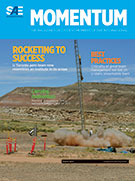Academic Institutions - SAE EDGE™ Research Reports
2024-05-17
SAE EDGE Research Reports provide examinations significant topics facing mobility industry today including Connected Automated Vehicle Technologies Electrification Advanced Manufacturing










